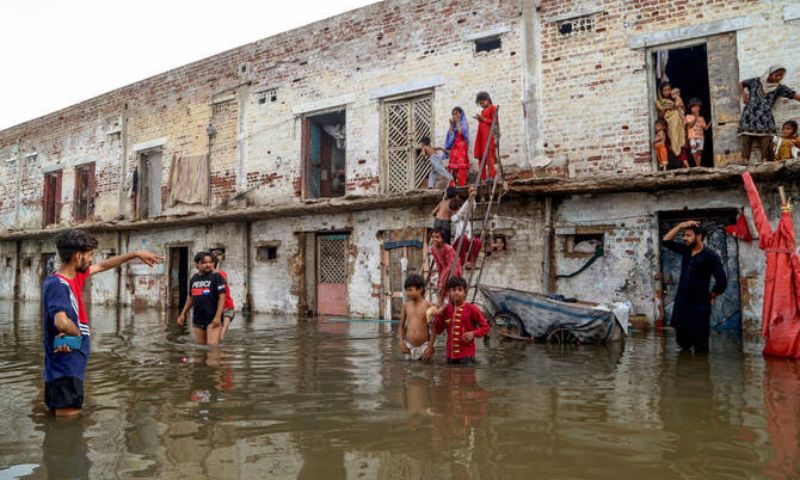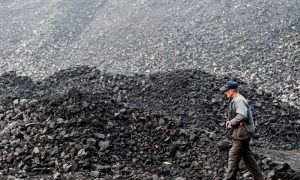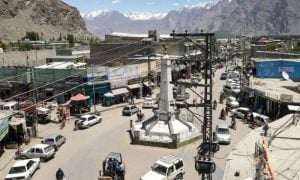Key points
- Half of Pakistan’s urban people live in flood-prone areas: Study
- Warns 2050 climate projections are already unfolding in 2025 amid rising temperatures
- Pakistan’s Govt reports 300 deaths and 1,600 damaged houses due to floods since June 26
ISLAMABAD: Heavy rainfall that triggered floods in Pakistan in recent weeks, killing hundreds of people, was worsened by human-caused climate change, according to a new study.
The study by World Weather Attribution, a group of international scientists who study global warming’s role in extreme weather, found that rainfall from June 24 to July 23 in the South Asian nation was 10 per cent to 15 per cent heavier because of climate change, leading to many building collapses in urban and rural Pakistan, AP reported.
Pakistan’s government has reported at least 300 deaths and 1,600 damaged houses due to the floods, heavy rain, and other weather since June 26.
Homeless
AP cited Saqib Hassan, a 50-year-old businessman in northern Pakistan as saying flooding on July 22 destroyed his home and 18 of his relatives’ homes, along with their dairy farms.
His farm animals were washed away, resulting in heavy losses — likely 100 million rupees ($360,000) — for him and his family, he said.
“We are homeless now. Our houses have been destroyed. All the government has given us is food rations worth 50,000 rupees ($177) and seven tents, where we’ve been living for the past two weeks,” AP cited Hassan as saying.
Series of disasters
AP cited Islamabad-based climate scientist Jakob Steiner as saying high temperatures and intense precipitation worsened by global warming have accelerated the pace of recent extreme weather events faster than climate experts expected.
“In the last few weeks, we have been scrambling to look at the number of events, not just in Pakistan, but in the South Asian region that have baffled us,” he said.
“Many events we projected to happen in 2050 have happened in 2025, as temperatures this summer, yet again, have been far above the average,” AP cited Steiner, a geoscientist with the University of Graz, Austria as saying.
Heavy monsoon rains have resulted in a series of disasters that have battered South Asia, especially the Himalayan mountains, which span across five countries, in the last few months.
AP cited the authors of the WWA study as saying that the rainfall they analysed in Pakistan shows that climate change is making floods more dangerous. Climate scientists have found that a warmer atmosphere holds more moisture, which can make rain more intense.
Extreme weather’s impact on Pakistan
Even though Pakistan is responsible for less than 1 per cent of planet-heating gases in the atmosphere, research shows that it incurs an outsized amount of damage from extreme weather. Pakistan witnessed its most devastating monsoon season in 2022, with floods that killed more than 1,700 people and caused an estimated $40 billion in damage.
According to the United Nations, global funds set up to deal with loss and damages because of climate change or funds set up to adapt to climate change are falling well short of the amounts needed to help countries like Pakistan deal with climate impacts, AP reported.
The UN warns that its loss and damage fund only holds a fraction of what’s needed to address yearly economic damage related to human-caused climate change.
Vulnerable to flooding
Similarly, UN reports state that developed countries such as the United States and European nations, which are responsible for the largest chunk of planet-heating gases in the atmosphere, are providing far less than what’s needed in adaptation financing.
These funds could help improve housing and infrastructure in areas vulnerable to flooding.
The WWA report says much of Pakistan’s fast-growing urban population lives in makeshift homes, often in flood-prone areas. The collapsing of homes was the leading cause of the 300 deaths cited in the report, responsible for more than half, AP reported.
“Half of Pakistan’s urban population lives in fragile settlements where floods collapse homes and cost lives,” said Maja Vahlberg of the Red Cross Red Crescent Climate Centre, who also helped author the WWA report, AP reported.
“Building flood-resilient houses and avoiding construction in flood zones will help reduce the impacts of heavy monsoon rain.”
























